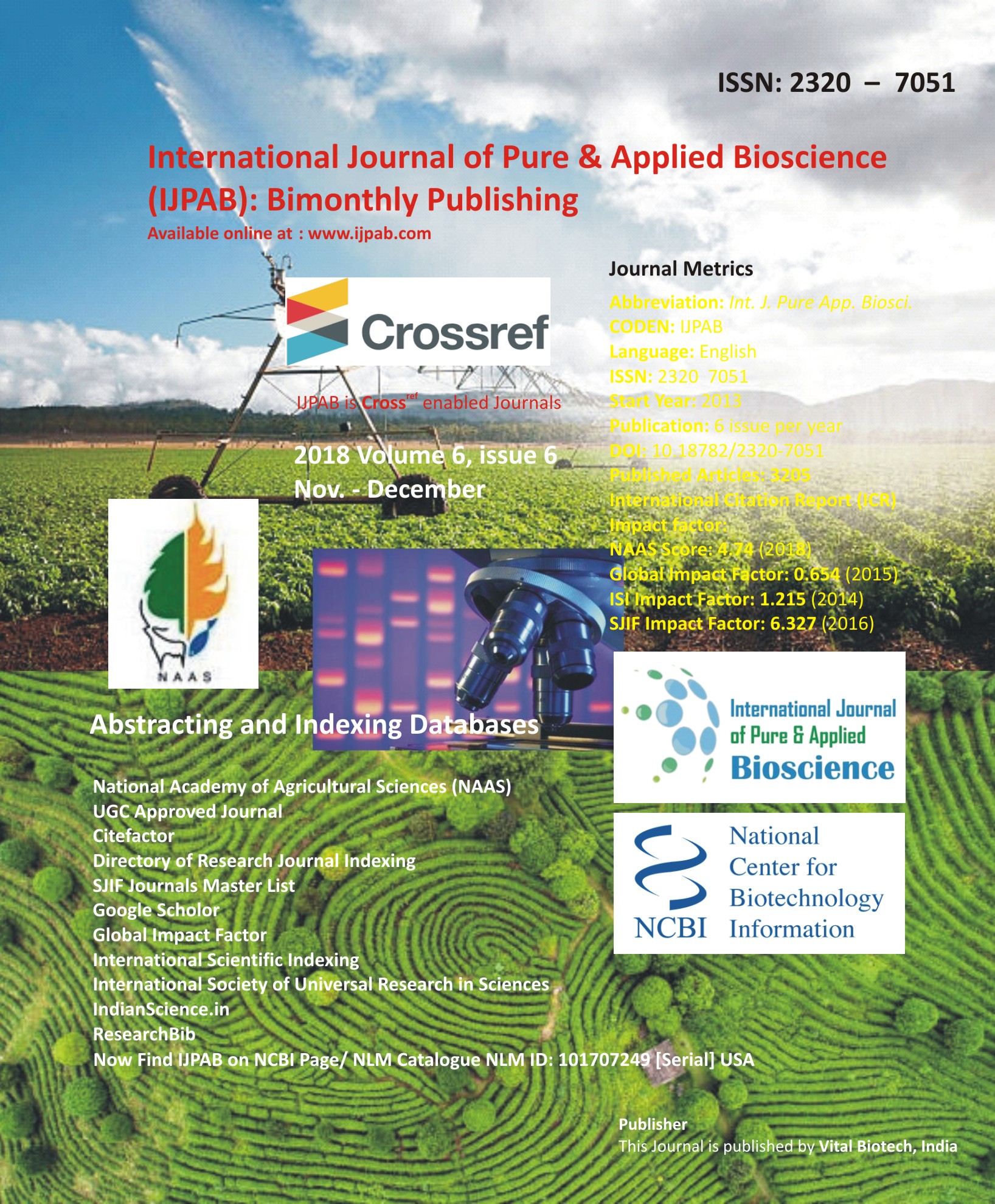
-
No. 772, Basant Vihar, Kota
Rajasthan-324009 India
-
Call Us On
+91 9784677044
-
Mail Us @
editor@ijpab.com
International Journal of Pure & Applied Bioscience (IJPAB)
Year : 2018, Volume : 6, Issue : 6
First page : (1258) Last page : (1263)
Article doi: : http://dx.doi.org/10.18782/2320-7051.7042
Colony Division Techniques for Stingless Bee, Tetragonula iridipennis (Smith)
Mythri P. G.*, R. N. Kencharaddi and L. Hanumantharaya
Department of Entomology, College of Forestry, Ponnampet
College of Horticulture, Mudigere, UAHS Shivamogga
*Corresponding Author E-mail: Mythrigandhi@gmail.com
Received: 3.11.2018 | Revised: 6.12.2018 | Accepted: 15.12.2018
ABSTRACT
Beekeeping is one of the best suitable occupations and a novel method of harnessing the non-timber forest products. Among the different species of honeybees, now a days the maintenance of stingless bees, the Meliponiculture is gaining popularity owing to its honey with high medicinal properties and its increasing demand for ayurvedic medicinal products. Meliponiculture is being followed in traditional ways by many of the forest dwellers and through some improved methods by the others, even then, there are no standardized techniques in the practice. An attempt was made to find out the suitable method for dividing the stingless bee colonies, one of the important practice in Meliponiculture. Different techniques including the methods which are in vogue among the beekeepers in respect to the other related species of stingless bees were followed to study their suitability in splitting the Tetragonula iridipennis colonies. Among the various methods tried the success rate ranged from 0.00 to 100 per cent with the minimum being in separation of brood without queen cells or gynes and the maximum in parallel method with the presence of gynes. Success rate of 86.66 per cent was found in case of parallel method with the presence of queen cells. In case of separation of brood with the presence of gynes, the success rate was 85.71per cent. Whenever the brood with gynes were separated and kept apart, the success rate was 85.70 per cent, followed by separation of brood with queen cells (75%). The budding method recorded the success rate of 60 per cent.
Keywords: Tetragonula iridipennis, Gynes, Budding method, Queen cells
Full Text : PDF; Journal doi : http://dx.doi.org/10.18782
Cite this article: Mythri, P.G. and Kencharaddi, R.N. and Hanumantharaya, L., Colony Division Techniques for Stingless Bee, Tetragonula iridipennis (Smith), Int. J. Pure App. Biosci.6(6): 1258-1263 (2018). doi: http://dx.doi.org/10.18782/2320-7051.7042

